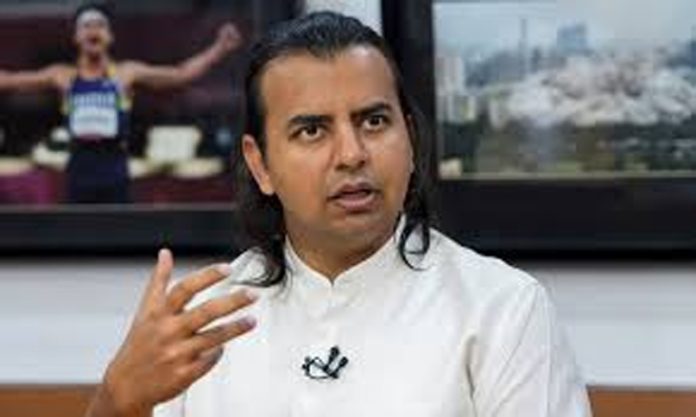NEW DELHI, Aug 22: Newly-listed Ola Electric has laid out a roadmap to profitability banking on higher volume, vertical integration of supply chain and in-house produced cells, while it has shelved plans to make electric car, according to company founder and CMD Bhavish Aggarwal.
The company, which forayed into the electric motorcycle segment last week, will build products that Indians need, which are by a vast majority two-wheelers and three-wheelers, he said in an interaction with PTI editors at the agency’s headquarters here.
In the first quarter of this fiscal, Ola Electric’s automotive segment EBITDA was almost break-even but for a one-time reversal of about Rs 30 crore it had to pay for a change in standard operating procedure in the government for PLI rules, he said, adding the cell segment is at a different stage of evolution.
Ola Electric’s net loss widened in the first quarter to Rs 347 crore, from Rs 267 crore in the corresponding period a year ago. In FY24, the company’s net loss was at Rs 1,586 crore.
“We have shown that even with fast growth, even with investing in ‘penetration’, you can improve margins. Now, there is a roadmap to profitability from EBITDA to PAT. We have two or three strategies, which we are continuing to execute on, which will deliver improving margins over the subsequent quarters,” Aggarwal said.
He was responding to a query on Ola Electric’s roadmap to profitability, as it remains a concern despite the company’s share price almost doubling from the listing price of Rs 76.
“As volumes are growing, the margins are improving because costs are not growing with it. That’s one theme on the path to profitability,” he said, adding the company would benefit from having a stable fixed cost as it has built a factory for a higher scale.
Aggarwal further said, “As a strategy, we did much more vertical integration of manufacturing and engineering. As we continue down that path, we further see margin expansion, because instead of buying from a global supplier, we are producing ourselves and then saving the 20-30 per cent margin for that component that the supplier will be charging us.”
Stressing that the cell is at the “centrepiece” of the roadmap to profitability, he said, “as our cell production goes into our own products, by early next year, there’ll be a very sizable margin expansion because of that also.”
Ola Electric has already announced plans to integrate its ‘Bharat 4680’ cell into its vehicles starting Q1 FY26.
He, however, said the company has not set a timeline to become profitable.
When asked if the electric car project is off the table, Aggarwal said, “Yes. We are not working on it right now. Our vision is to build products relevant for India and build technologies to enable those products at scale and we’re going in a sequence, two-wheelers and then other products.”
“India needs to build a sustainable paradigm of energy and automotive. The global solution for sustainability is (electric) luxury cars… That’s not relevant for India. India is (electric) two-wheelers, three-wheelers, maybe small cars,” he said.
In 2022, he had announced that Ola Electric would foray into the electric cars segment with plans to launch its first model by 2024, while setting an ambitious target of selling 10 lakh electric cars by 2026-2027.
On his ‘End ICE Age’ campaign, he said,” (it) is a given. Only question is when.”
Explaining the reasons, Aggarwal said internal combustion engine (ICE) vehicles are inflationary on two fronts, as vehicle cost goes on increasing in order to comply with emissions, while fuel cost also goes up because of macroeconomic factors.
On the other hand, EVs only become more affordable as the battery cost is reducing, while electricity cost is also coming down as generation cost is declining with more and more renewable energy coming into play.
He said from a penetration of just 1 per cent when Ola Electric entered the market three years ago, electric two-wheeler penetration was 7.5 per cent in July.
“It is a very fast pace of growth actually. Most of the action has been on the electric scooter side… Think of another three years. It’s only going to amplify… Now we are bringing motorbikes where the EV penetration is very early. Same journey will happen there,” he said.
In 2023-24, ICE two-wheelers wholesales were 1.8 crore, on the other hand electric two-wheeler retail sales were at 9.47 lakh.
Asked about the response of major conventional two-wheeler makers like Bajaj Auto, Hero MotoCorp and TVS to EV adoption, he said, “The incumbents have entered into the EV world, a bit halfheartedly.”
“Our mission is to make India a global leader in EV and sooner the incumbents realise that EVs are the future, and the sooner they commit holistically and wholeheartedly, it will be great for the Indian ecosystem…,” Aggarwal said.
He further said the more they resist this change, the more they are harming their own companies and their own shareholders because it will delay their transition to EVs.
“It will delay India’s transition to EVs. I will do my bit. My goal is not to have 70 per cent market share. My goal is to make India a full EV nation and if others can take part in that nothing like it. The more they delay the inevitable, the more their shareholders will suffer,” he cautioned. (PTI)
Trending Now
E-Paper


